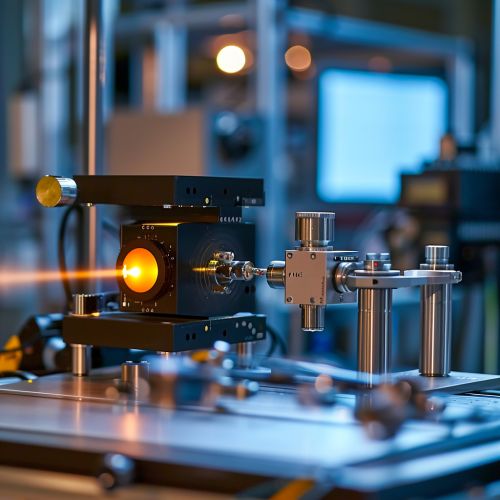Optical parametric oscillator
Introduction
An optical parametric oscillator (OPO) is a type of light source that emits light through the process of parametric oscillation. This process involves the interaction of light waves within a nonlinear medium, resulting in the generation of new light waves with different frequencies. The OPO is a critical tool in various scientific and industrial applications, including spectroscopy, laser cooling, and quantum information science.


Principle of Operation
The operation of an OPO is based on the principle of parametric process in optics. When a high-intensity pump beam interacts with a nonlinear optical medium, it can give rise to two new light waves: the signal and the idler. This process is known as parametric down-conversion, and it conserves both energy and momentum.
The frequencies of the signal (ν_s) and idler (ν_i) waves are related to the frequency of the pump wave (ν_p) by the energy conservation equation:
ν_p = ν_s + ν_i
The direction of propagation of these waves is determined by the phase-matching condition, which ensures the conservation of momentum. In an OPO, the signal wave is typically the output, while the idler wave is discarded or used for other purposes.
Nonlinear Optical Medium
The nonlinear optical medium used in an OPO is a material with a high nonlinear susceptibility. This property allows the medium to interact strongly with intense light, leading to the generation of new light waves through the parametric process.
Commonly used nonlinear optical materials include lithium niobate (LiNbO3), beta-barium borate (BBO), and periodically poled lithium niobate (PPLN). These materials have different properties, such as their nonlinear coefficients, transparency ranges, and damage thresholds, which can be selected based on the specific requirements of the OPO.
Types of OPOs
There are two main types of OPOs: singly-resonant OPOs (SROs) and doubly-resonant OPOs (DROs).
In a SRO, only the signal wave is resonated within the OPO cavity, while the idler wave is not. This configuration is simpler and more stable, but it has a lower conversion efficiency compared to a DRO.
In a DRO, both the signal and idler waves are resonated within the OPO cavity. This configuration has a higher conversion efficiency, but it is more complex and less stable due to the need to maintain simultaneous resonance of two waves.
Applications
OPOs have a wide range of applications in various fields.
In spectroscopy, OPOs are used to generate tunable light sources for the investigation of molecular structures and dynamics. The broad tunability and high power of OPOs make them ideal for this purpose.
In quantum information science, OPOs are used to generate entangled photon pairs for quantum communication and computation. The parametric process in an OPO can be used to create these photon pairs with high efficiency and purity.
In laser cooling, OPOs are used to generate the necessary frequencies for cooling different types of atoms. The tunability of OPOs allows them to be used for cooling a wide range of atomic species.
